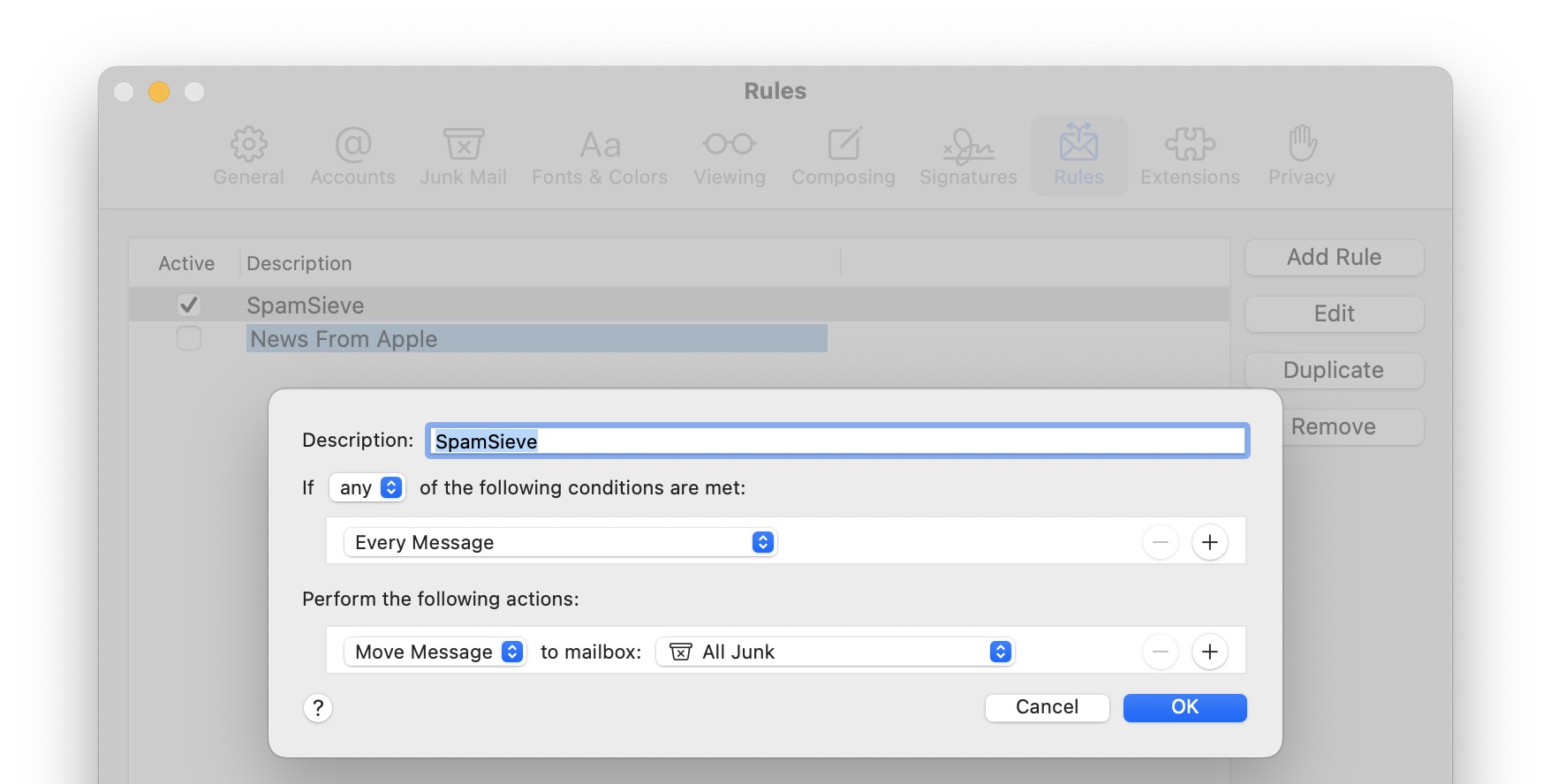
To connect to Exchange Online PowerShell, see Connect to Exchange Online PowerShell. You can only use Exchange Online PowerShell to do the procedures in this article. What do you need to know before you begin? Policy filtering, Content filtering and Defender for Office 365 checks will still be applied to the messages.

To prevent users from adding entries to their Safe Senders list in Outlook, use Group Policy as mentioned in the About junk email settings in Outlook section later in this article. Messages from senders that users have added to their own Safe Senders lists will skip connection filtering as part of EOP (the SCL is -1). Admins can also use Exchange Online PowerShell to configure entries in the safelist collection on mailboxes (the Safe Senders list, the Safe Recipients list, and the Blocked Senders list). When the junk email rule is disabled on the mailbox, EOP can't move messages to the Junk Email folder based on the spam filtering verdict action Move message to Junk Email folder or the safelist collection on the mailbox.Īdmins can use Exchange Online PowerShell to disable, enable, and view the status of the junk email rule on mailboxes. When the junk email rule is enabled on the mailbox, EOP is able to move messages to the Junk Email folder based on the spam filtering verdict action Move message to Junk Email folder or the Blocked Senders list on the mailbox, and prevent messages from being delivered to the Junk Email folder (based on the Safe Senders list on the mailbox). Admins can configure the safelist collection on any user's mailbox. Users can configure the safelist collection for their own mailbox in Outlook or Outlook on the web (formerly known as Outlook Web App).

The entries in these lists determine whether the junk email rule moves the message to the Inbox or the Junk Email folder. Junk email settings that users configure for themselves in Outlook or Outlook on the web: The safelist collection is the Safe Senders list, the Safe Recipients list, and the Blocked Senders list on each mailbox. For more information about ZAP, see Zero-hour auto purge (ZAP) in Exchange Online. Similarly, if zero-hour auto purge (ZAP) determines a delivered message is spam or phish, the junk email filter rule moves the message to the Junk Email folder for Move message to Junk Email folder spam filtering verdict actions. For more information about spam filtering verdicts in anti-spam policies, see Configure anti-spam policies in EOP. Move messages to the Junk Email folder based on anti-spam policies: When an anti-spam policy is configured with the action Move message to Junk Email folder for a spam filtering verdict, the junk email filter rule moves the message to the Junk Email folder after the message is delivered to the mailbox. The junk email rule controls the following features: For more information, see Anti-spam protection in EOP.īut, there are also specific anti-spam settings that admins can configure on individual mailboxes in Exchange Online:Įnable or disable the junk email rule: The junk email rule is a hidden Inbox rule named Junk E-mail Rule that's enabled by default in every mailbox. In Microsoft 365 organizations with mailboxes in Exchange Online, organizational anti-spam settings are controlled by Exchange Online Protection (EOP). Microsoft Defender for Office 365 plan 1 and plan 2.

This new experience brings Defender for Endpoint, Defender for Office 365, Microsoft 365 Defender, and more into the Microsoft 365 security center. The improved Microsoft 365 Defender portal is now available.


 0 kommentar(er)
0 kommentar(er)
